By Alessandra Ressa
If you live in Trieste and you have never visited Contovello village, you have definitely missed out. Clinging to the mountain and overlooking the sea, medieval Contovello is the pearl of the Karstic hills for its architectural beauty, unique history and breathtaking views.

Not to mention its terraced vineyards which produce excellent local wines you can enjoy in nearby “osmizas” (for example, in osmiza Verginella).
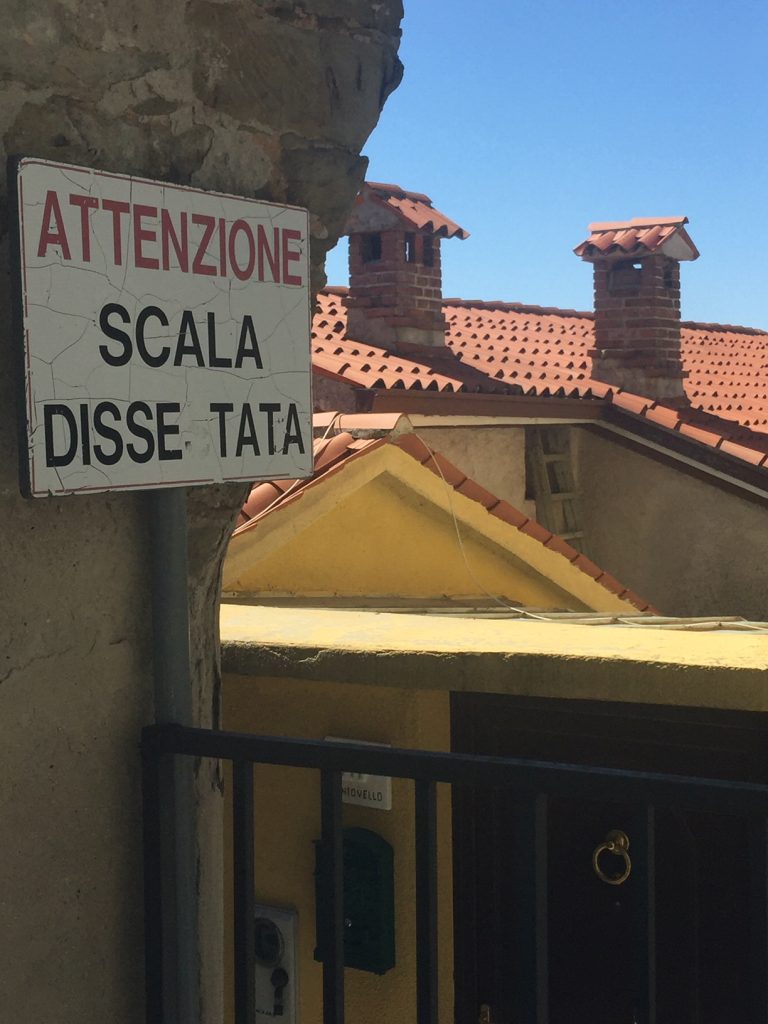
If you want to add a little bit of physical challenge to your visit, here is a unique itinerary you will surely enjoy. The refeshing home made wines and prosciuttos will taste a lot better after that.

From the waterfront neighborhood of Barcola take the steep Salita Cedas a Mare, across the street from the last Topolino (the free access beach terraces that vaguely remind of Mickey Mouse). Walk under the railway bridge and follow the road all the way up to its end. While you do, notice the xclusive villas surrounded by luscious woods overlooking the sea.
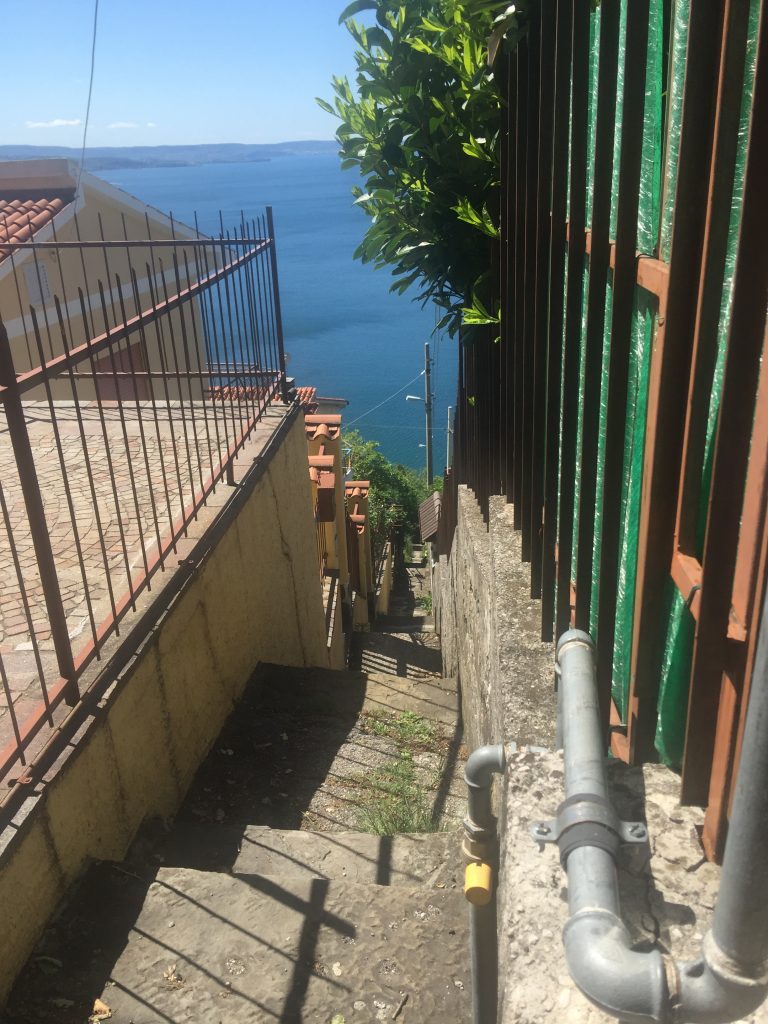
The road becomes narrower, until it eventually turns into a trail. A steep semi-natural stairway will tell you that the trail is temporarily interrupted at the top.
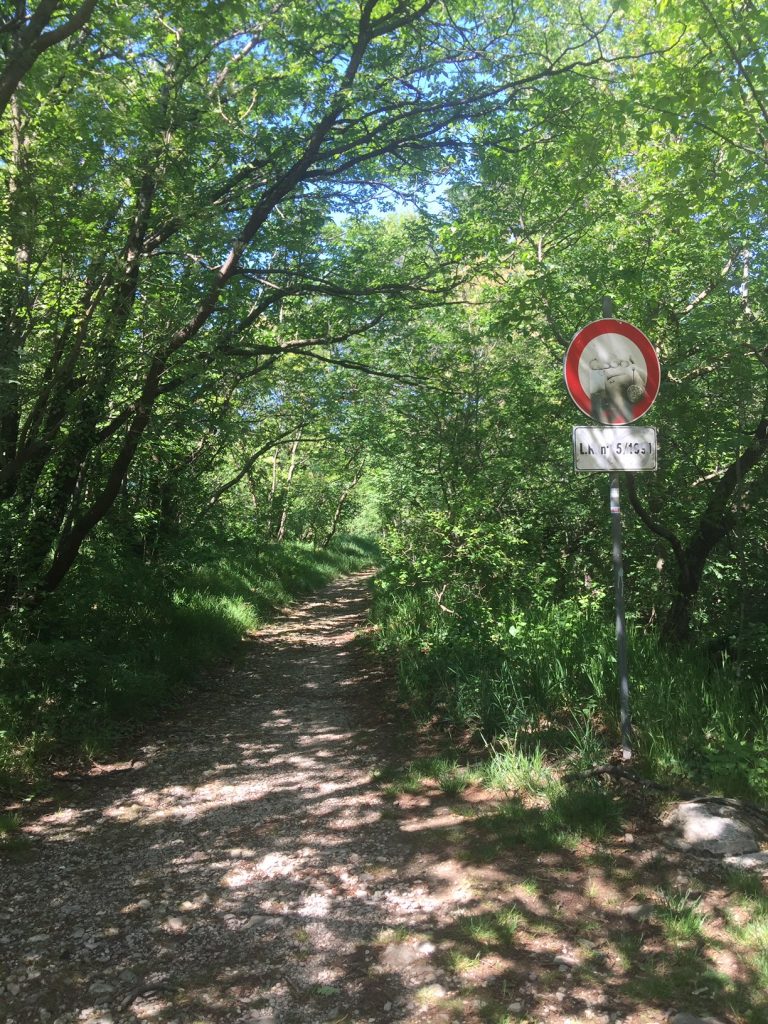
Go across the gap in the wall at the end of the stairway and turn right on the paved road. Follow the road uphill as soon as possible.

You’ll find yourself in winding Strada del Friuli. Take another right and walk for approximately 150 metres (watch out for the racing cars) until you see municipal trash bins across the street. That’s where the trail continues all the way up to Strada Napoleonica.
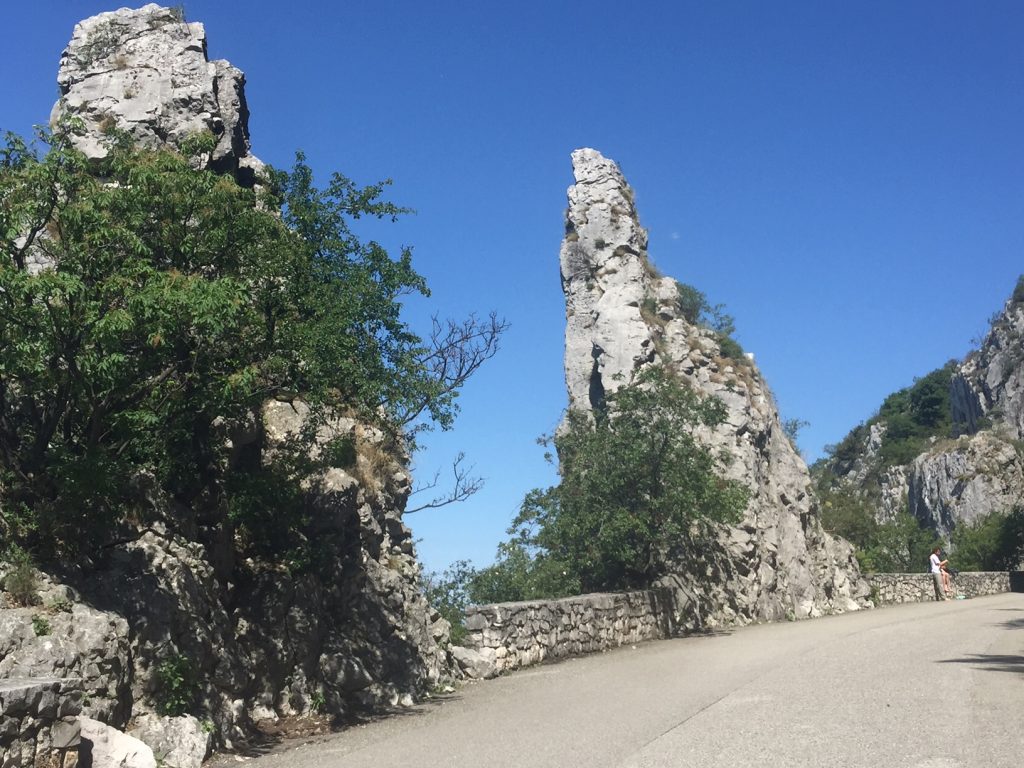
On the way up, enjoy the scent of wild marjoram, thyme and sage, their tiny bushes growing out of the white-washed rocks. When you reach the main Napoleonica trail turn left and walk through the magnificent clean-cut cliffs where brave Triestini practice rock climbing every weekend.
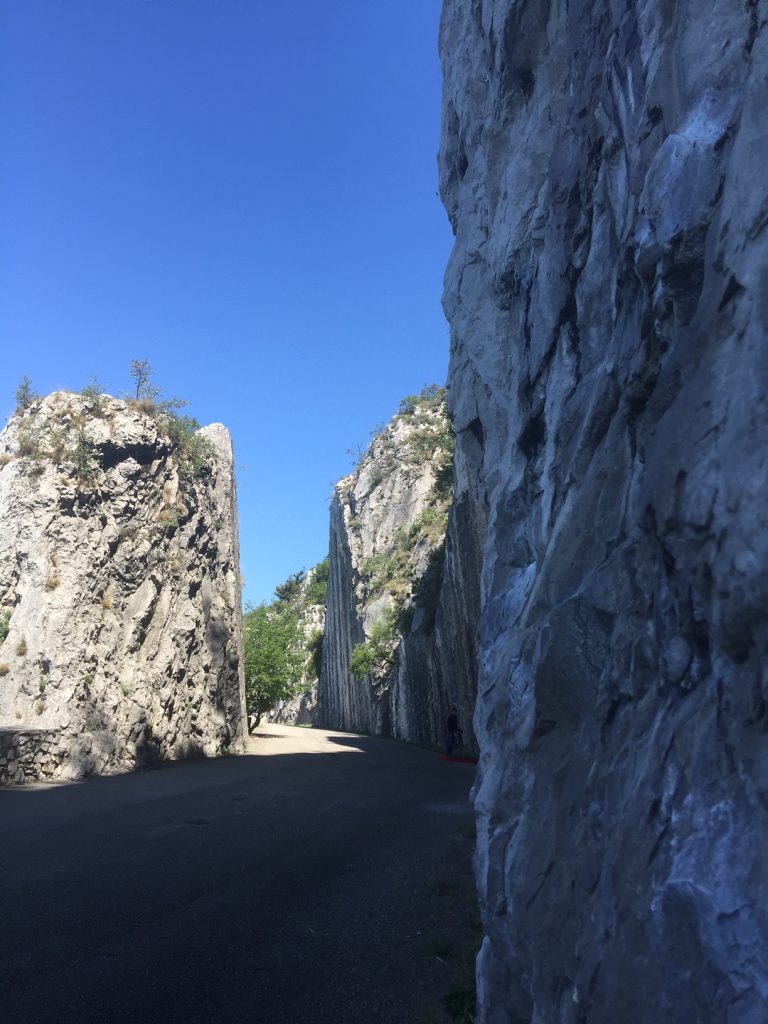
Continue until you reach the end of the Napoleonica and its parking lot. A little further down on your left you will see the beginning of yet another trail, this time with its unmistakable red and white circular sign.

Follow the trail all the way to Contovello and when you find yourself among country houses, keep left whenever possible. If you pass a huge concrete monster with weird balconies and stairs (a spooky abandoned retirement home), you are on the right track.
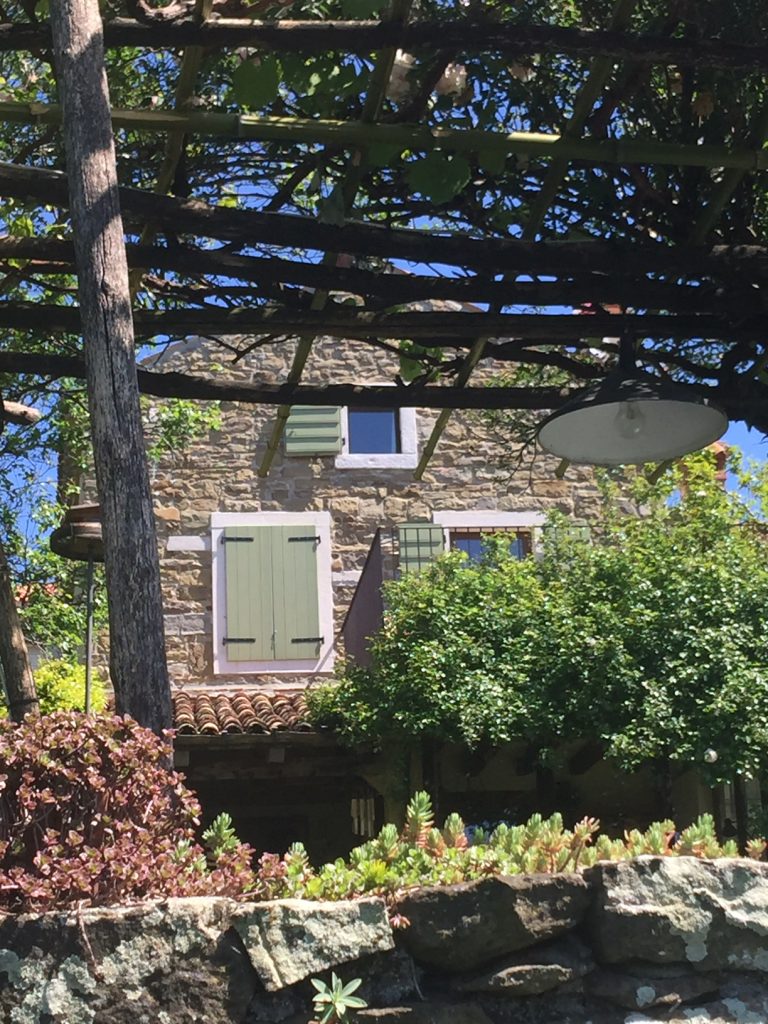
Go across Strada del Friuli once again and follow the main road up to Contovello church and main square. Congratulations, you made it.
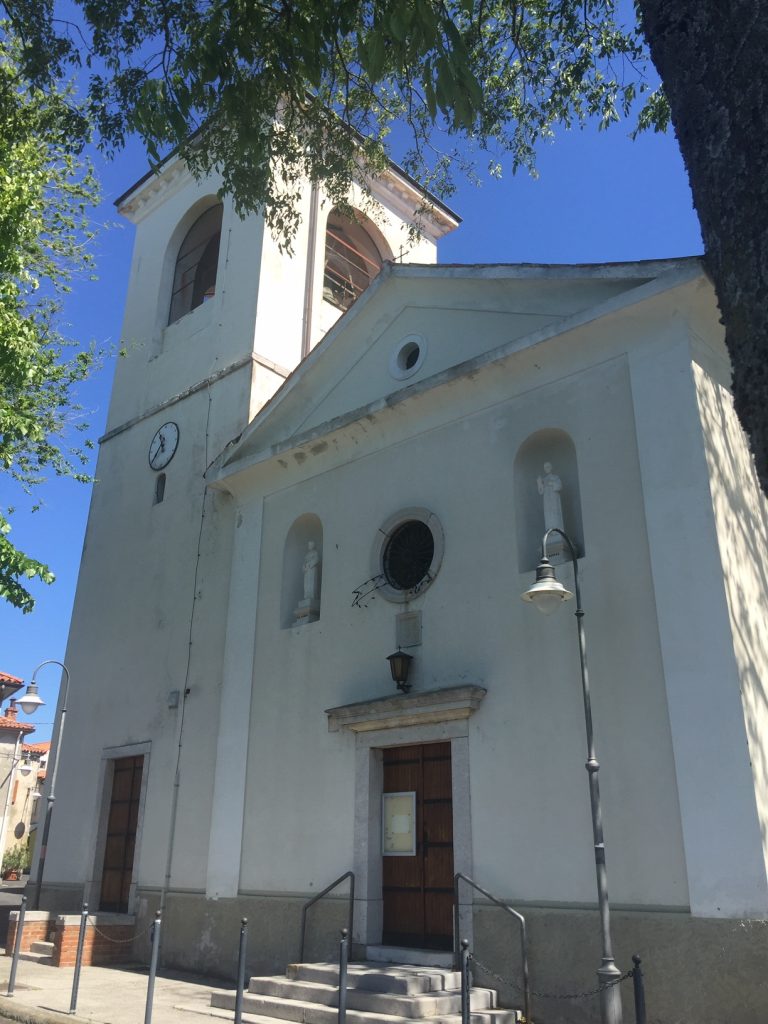
Take time to explore the narrow alleys, get lost following the stairs going up and down the steep hill, and admire the pastel-colored beautiful houses with their tended gardens facing the sea. Go under medieval arches and enjoy the smell of herbs and home cooking.
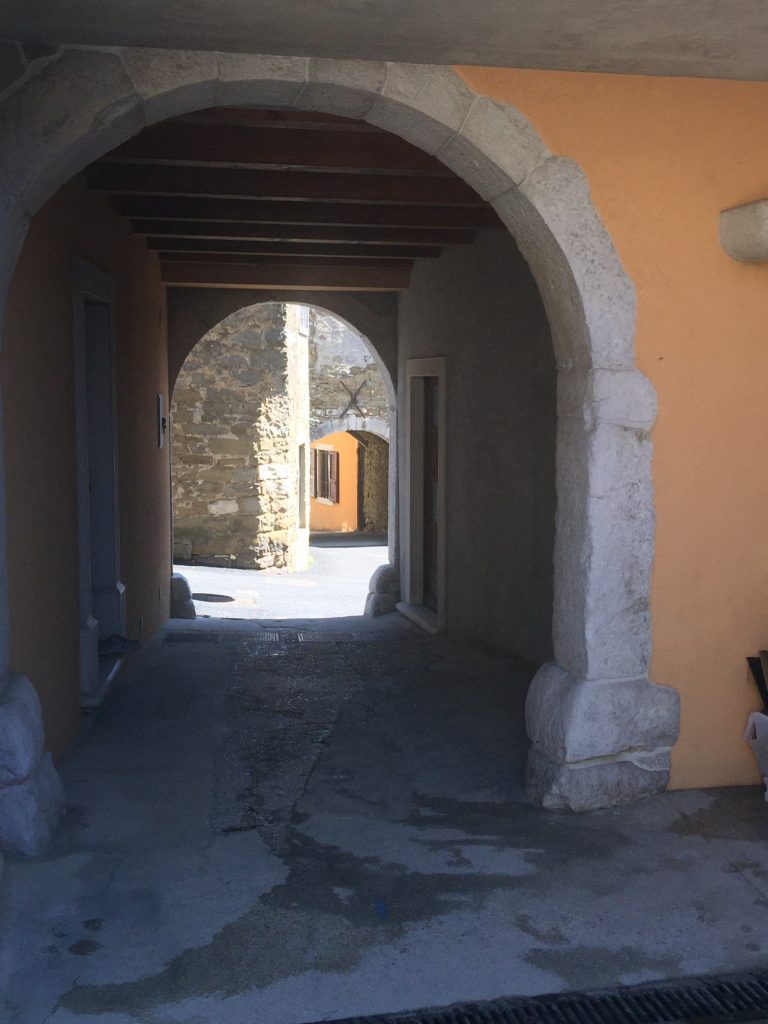
If you follow the way that divides the houses from the terraced cultivated land, you will find a solitary bench with an open view on the Adriatic. Sit, rest, and read about this ancient and unique place.
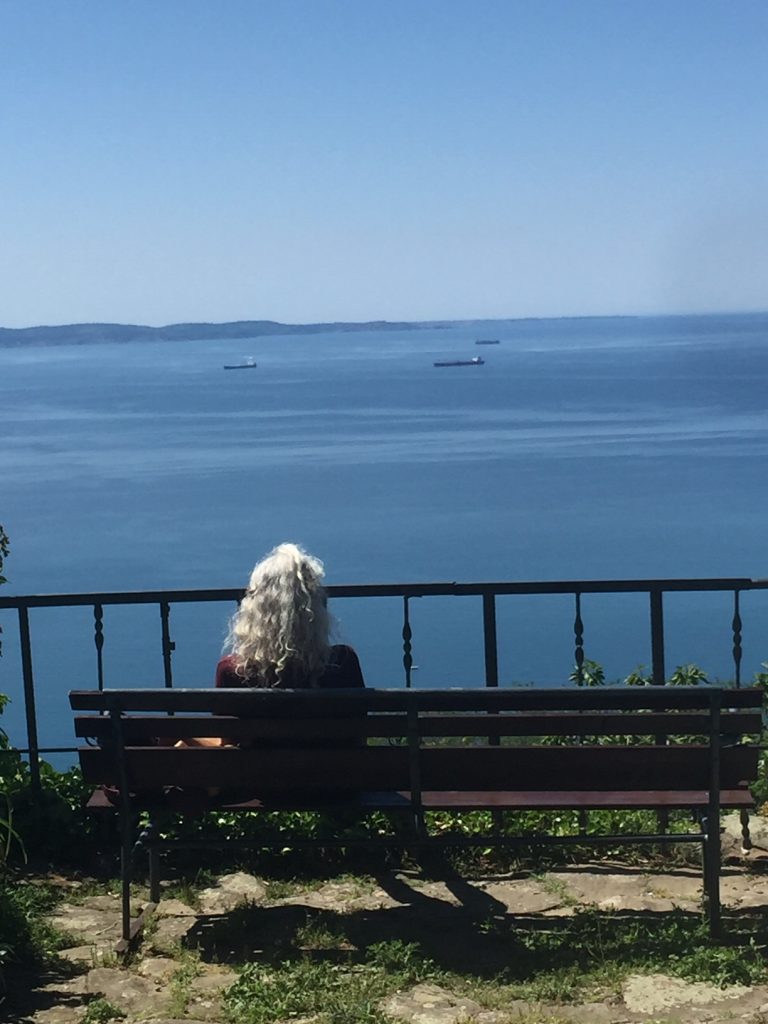
At the beginning of the 14th century the bishopric of Trieste, which bordered the lordship of Duino, built a fortified castle, where Contovello stands today, to dominate the sea and the main roads of access to Trieste. The castle, known as Castrum Montis Collani or Moncolanum, was built on special marly lime soil that allowed the cultivation of vineyards and olive trees. Because of its dominant position and rich lands, in 1369 the castle was attacked and conquered by the Venetian army.

Restitution of land and property to Trieste followed only after long negotiations. In 1382 the Austrians took over. The castle became known as Torre di Moncolano. Forty years later, near the tower, authorities decided to build a settlement to be used by slavic populations who inhabited the area and cultivated the lands.

We don’t know for sure why the village was later named Contovello. One romanticized explanation is that it comes from contar le vele or counting sails – an idiomatic expression referred to the wives of fishermen looking out to sea while waiting for their husbands to come home.
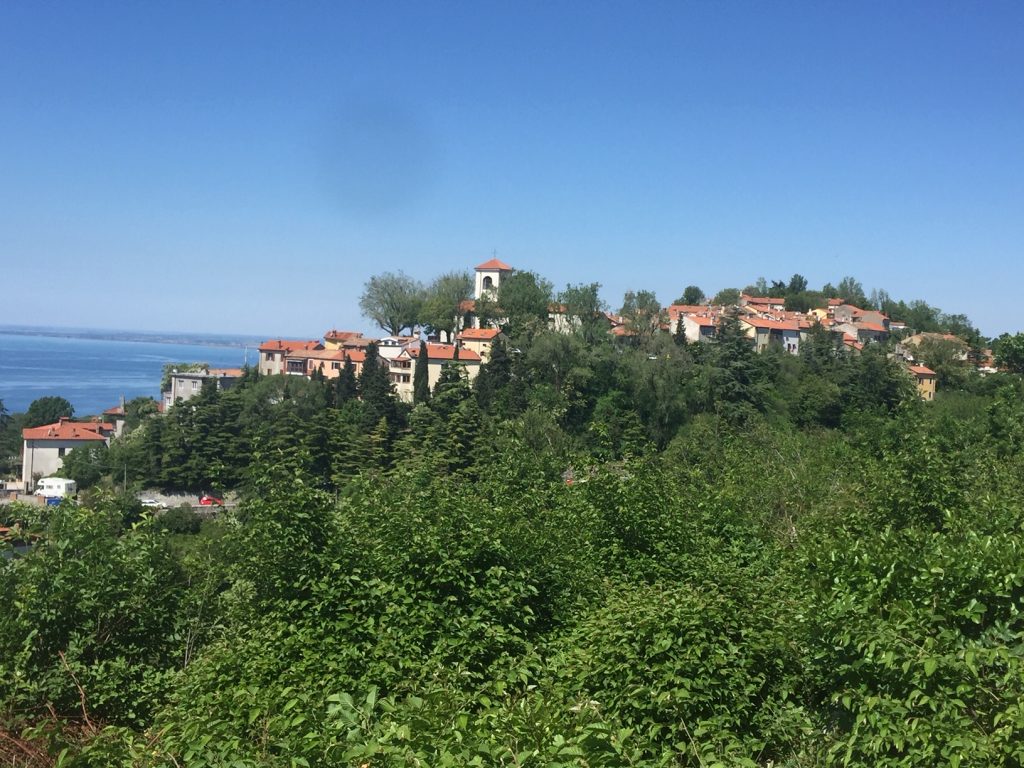
But Contovello was such an appealing place that it was continuously attacked by armies from Veneto, Hungary and even Bosnia. A defensive wall was built around the settlement. In addition to external attacks, long internal fights for control of the area, negligence on the part of administrators and earthquakes started to take their toll on the poor medieval fortress.
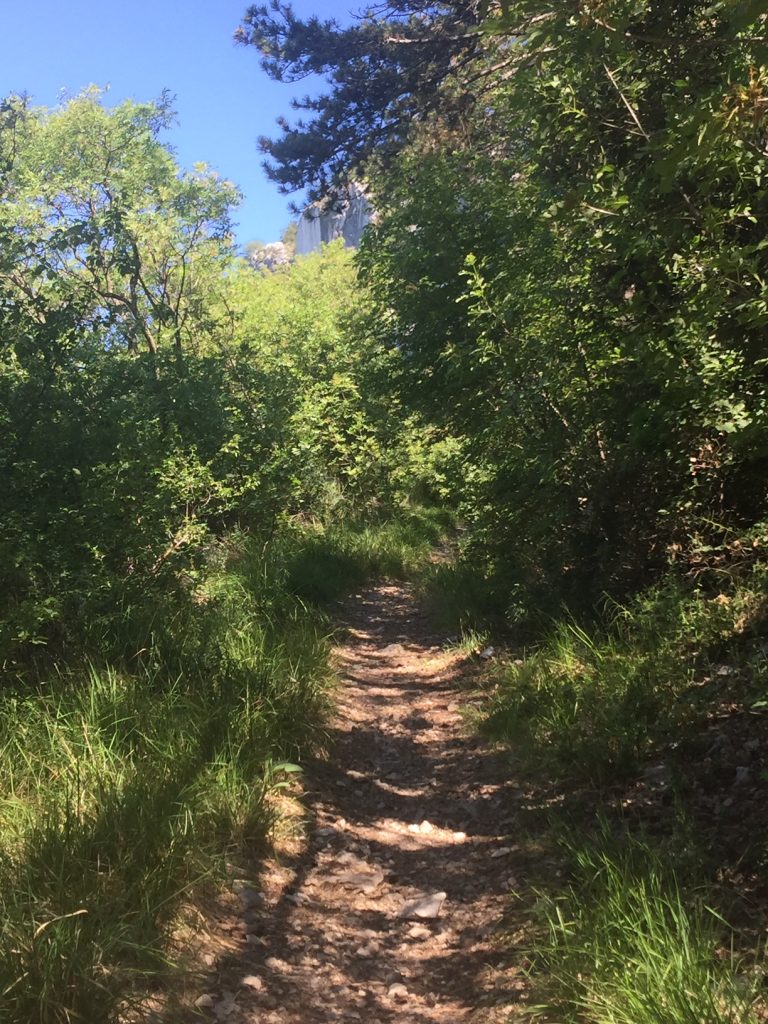
As if that wasn’t enough, some historical documents even mention the castle being constantly hit by lightning during storms…. Inevitably, Torre Moncolano deteriorated, its stones were used for construction as the village expanded, and it finally disappeared in 1650.
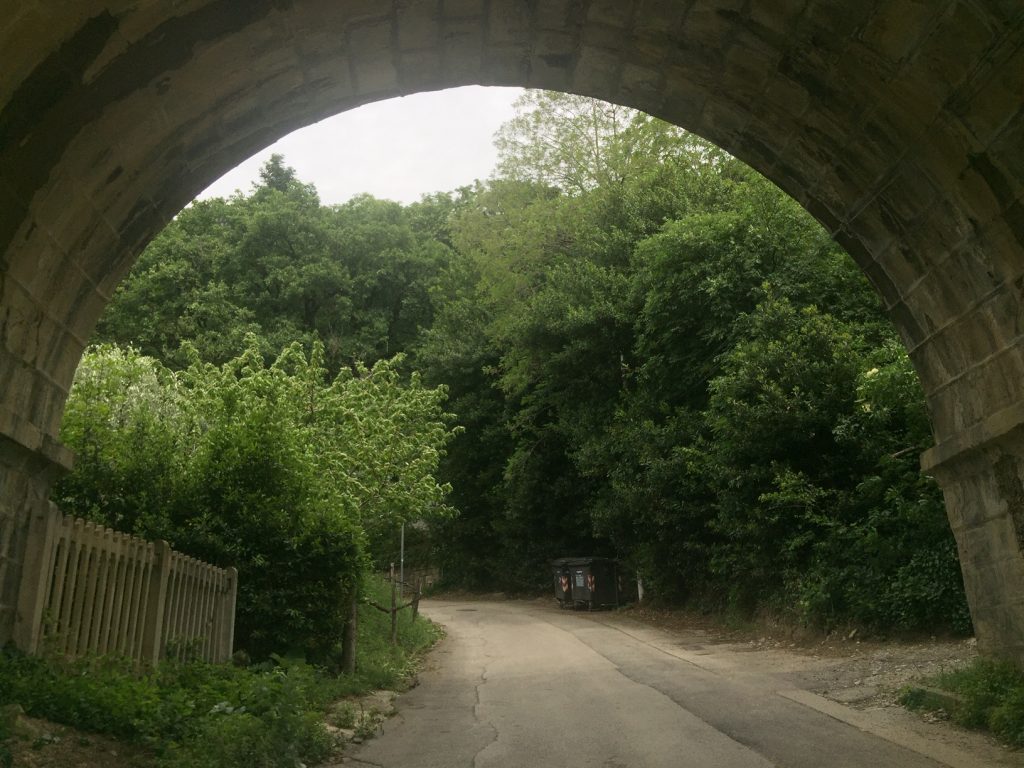
Today there is nothing left of the medieval wall that surrounded Contovello. Some historians believe that there’s an ancient mound located by the Contovello cemetery, which is still visible today, that dates back to Torre Moncolano. Excavations only partly proved that those are the remains of the fortress. But on that occasion, archaeologists also found Roman artifacts and prehistoric remains, thus moving Contovello’s early settlers way back in time. Unfortunately, further investigations were not possible due to the presence of houses and gardens covering the grounds.
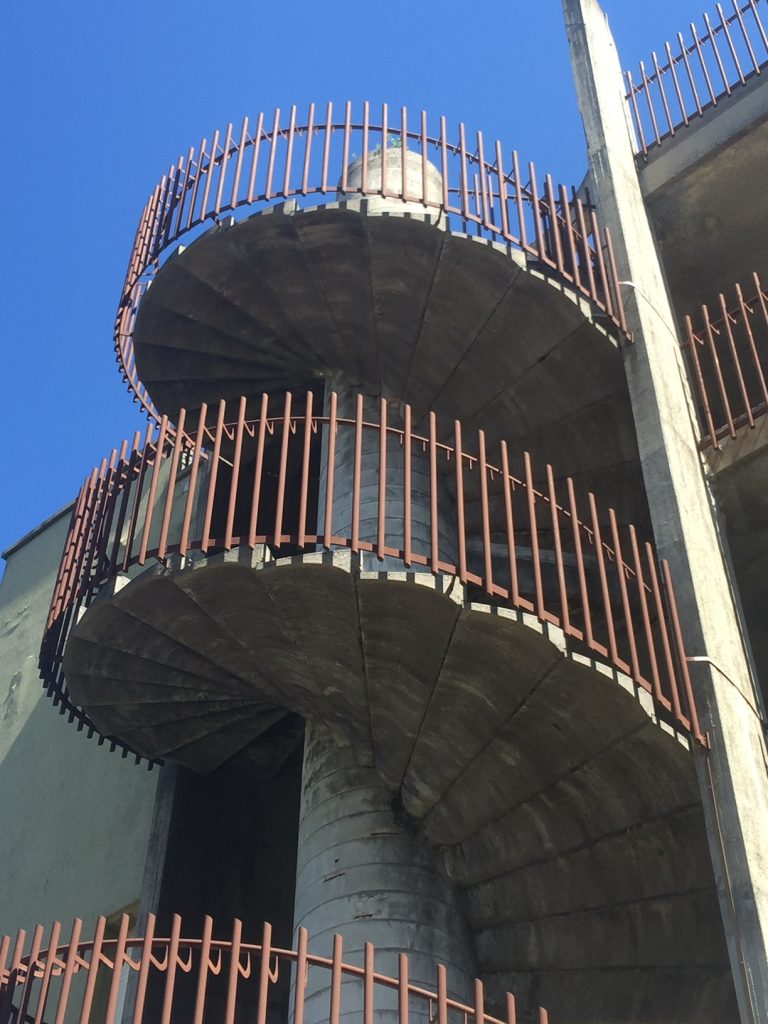
Even without its medieval castle and walls, Contovello today is a lovely little place that offers photography lovers the chance to collect some really inspiring shots. Among its limestone paved alleys are beautiful little houses with tendered wooden balconies and blooming gardens. Don’t miss the Roman-Gothic church of San Gerolamo, dating back to 1606, with its beautiful frescoed ceilings.
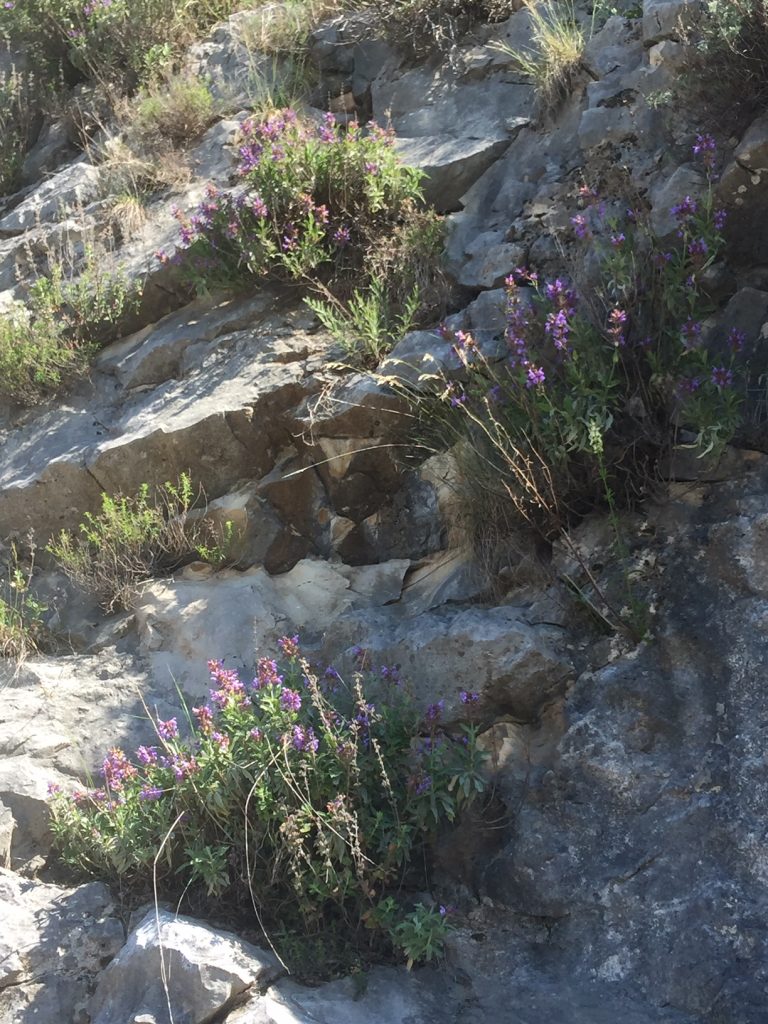
If you walk back to the main road and take the first alley on the left of the old green fountain, you will reach the beautiful pond with its deafening frogs. Follow the Sentiero Natura to the stone stairway and you’ll find yourself in Grignano at the old Miramare Station. From there you can reach the North entrance of the park of the Miramare Castle and walk back to Barcola.

You can also take the very steep Salita di Contovello just outside the village. It will take you back to Barcola. Or, if you want to go back the way you came but you are also up for one last thrill, when you reach Strada del Friuli from the trail connecting to Napoleonica (where the trash bins are), try the narrow and steep stairway across the street. It will take you straight, almost vertically, to Barcola, but you may have to say goodbye to your knees.

























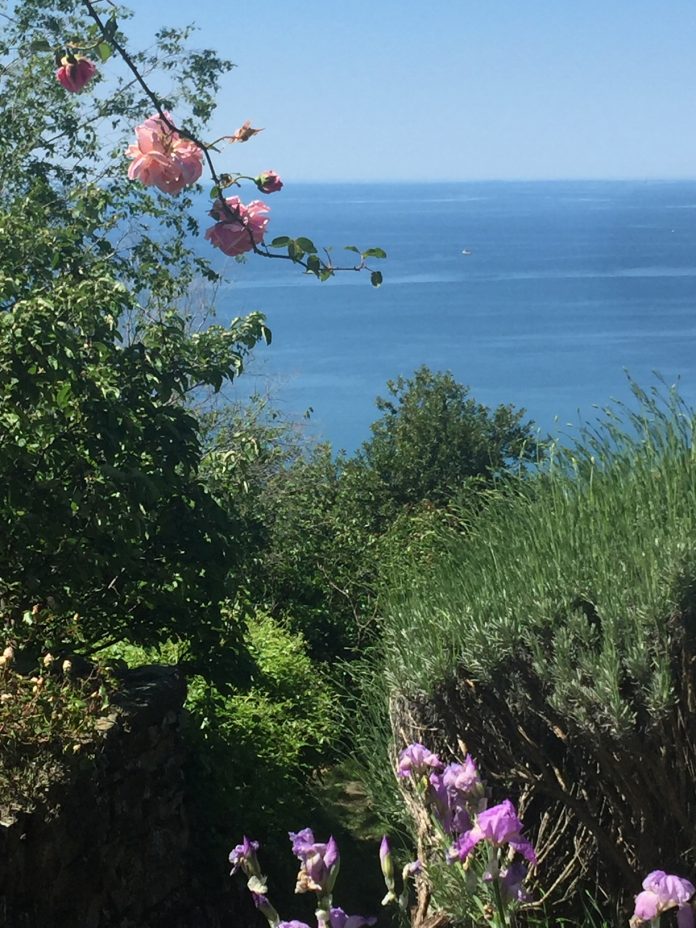




Grazie
Grazie, on Article on Contovello.